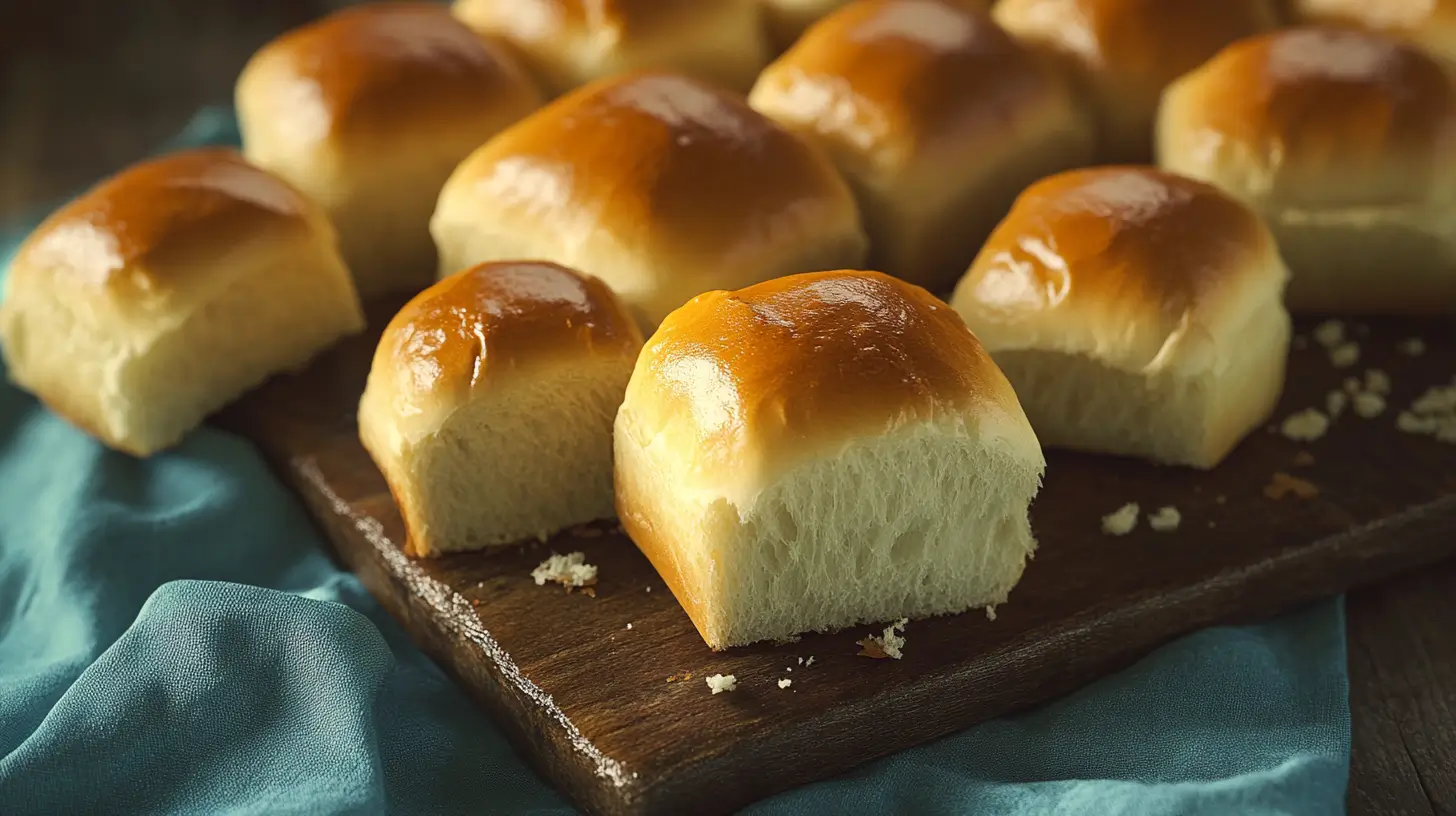Hawaiian bread has earned its reputation as a breakfast favorite, and many wonder, “Why is so good?” The answer lies in its distinct combination of sweet flavor, fluffy texture, and versatility. Unlike ordinary bread, it boasts a perfect balance of sweetness and richness, making it an excellent choice for a wide array of breakfast dishes.
What truly sets Hawaiian bread apart is its inclusion of tropical ingredients like pineapple juice, which not only adds flavor but also enhances its softness. Its light yet rich quality ensures that it complements various spreads and fillings, from butter and jam to ham and cheese. Moreover, Hawaiian bread’s unique texture makes it the perfect foundation for breakfast recipes, ensuring it remains a beloved staple in kitchens worldwide.
Table of Contents
The Origins and History
It traces its roots to the 1950s in Hilo, Hawaii, where Robert Taira first created this iconic bread. Inspired by Portuguese sweet bread, Taira infused his recipe with local flavors, crafting something that resonated with the Hawaiian community.
The bread’s success quickly spread across Hawaii, as locals embraced its sweet, soft texture. Over time, It became synonymous with breakfast traditions, where families shared it during morning meals. Its enduring popularity is a testament to how cultural and culinary heritage can combine to create something extraordinary.

The Story of King’s Hawaiian Bakery
The rise of King’s Hawaiian bakery explains much of why Hawaiian bread is so good. Established by Robert Taira in 1950, the bakery initially served the local community in Hawaii. However, it wasn’t long before word of the bread’s unique flavor and texture spread beyond the islands.
King’s Hawaiian moved its operations to California in the 1970s to meet growing demand. Today, the brand is a household name, known for maintaining the quality and authenticity of its original recipe. The company’s commitment to preserving the traditional taste of Hawaiian bread has made it a staple in breakfast menus nationwide.
Traditional Ingredients
The ingredients used in Hawaiian bread are a key factor in why it’s so good. Its recipe includes enriched flour, eggs, sugar, butter, and milk, which create its signature richness. However, the addition of pineapple juice is what truly elevates its flavor.
Each ingredient serves a purpose:
- Eggs provide structure and a golden hue.
- Butter and milk enhance its creamy texture.
- Sugar delivers the right amount of sweetness.
This carefully balanced combination is what gives Hawaiian bread its unmistakable flavor and texture, making it a breakfast essential.
The Role of Pineapple Juice in the Recipe
If you’ve ever wondered, “Why is Hawaiian bread so good?”, this ingredient is a significant reason. Pineapple juice not only imparts a subtle tropical sweetness but also contributes to the bread’s softness and moisture.
This ingredient ensures that Hawaiian bread retains its tender texture, even after baking. Additionally, the mild tang of pineapple juice provides a delicate contrast to the bread’s sweetness, creating a well-rounded flavor profile.
The Fluffy Texture and Sweet Flavor of Hawaiian Bread
The unparalleled softness of Hawaiian bread is another reason why it’s so good. Its airy texture comes from a slow fermentation process, allowing the yeast to work its magic and create the perfect rise. This process ensures the bread remains light, fluffy, and moist.
The sweetness of Hawaiian bread is carefully balanced to avoid overpowering other flavors. Whether paired with sweet toppings like honey or savory fillings like eggs and cheese, it maintains its distinctive taste. This versatility makes it a breakfast favorite, suitable for a wide range of dishes.
Hawaiian Bread as a Cultural Staple in Hawaii
Isn’t just a food item—it’s a cultural icon. For generations, it has been a central part of breakfast gatherings, symbolizing warmth and togetherness. Families across Hawaii often incorporate it into their morning meals, whether served plain or as part of a recipe.
The bread’s significance goes beyond its taste. It represents a blend of local Hawaiian traditions and international influences, which is part of why Hawaiian bread is so good. Its enduring presence in Hawaiian households highlights its importance as a cultural staple.
The Popularity of Hawaiian Bread Beyond Hawaii
Hawaiian bread’s appeal has extended far beyond the islands, becoming a breakfast favorite worldwide. Its unique flavor and texture have made it a hit in kitchens across the globe. If you’ve ever asked, “Why is Hawaiian bread so good?”, its versatility and universal appeal are major factors.
This bread is now a common feature in supermarkets and bakeries, bringing a taste of Hawaii to homes everywhere. Its ability to complement a variety of breakfast dishes has solidified its place in culinary traditions far beyond its origins.

Creative Uses of Hawaiian Bread in Recipes
Hawaiian bread’s adaptability is another reason why it’s so good. Its slightly sweet flavor and fluffy texture make it an excellent base for creative breakfast recipes. From French toast to breakfast casseroles, it’s a versatile ingredient that can transform any meal.
Some popular uses include:
- Breakfast sliders filled with eggs and sausage.
- Sweet bread pudding with cinnamon and raisins.
- Mini breakfast rolls served with cream cheese and jam.
These creative applications highlight the bread’s ability to enhance breakfast menus in countless ways.
Sandwiches and Sliders
One of the simplest yet most satisfying ways to enjoy Hawaiian bread is as a base for breakfast sandwiches and sliders. Its soft texture and subtle sweetness make it the perfect partner for savory ingredients like bacon, eggs, and cheese.
This balance is why Hawaiian bread is so good for handheld breakfast creations. Its ability to complement both simple and gourmet fillings makes it a staple for on-the-go breakfasts.
Hawaiian Bread as a Dessert Base
It shines as a base for breakfast-inspired desserts. If you’ve ever wondered, “Why is Hawaiian bread so good?”, its ability to adapt to sweet dishes is a big reason. Its flavor pairs beautifully with fruits, creams, and syrups, making it a favorite for indulgent morning treats.
Popular examples include:
- French toast topped with maple syrup and berries.
- Bread pudding layered with caramel sauce.
- Toasted Hawaiian bread served with whipped cream and chocolate drizzle.
Its versatility ensures that it can satisfy even the sweetest breakfast cravings.
Production Methods: Traditional and Modern Baking Techniques
The way Hawaiian bread is made contributes significantly to why it’s so good. Traditional baking techniques focus on using fresh ingredients and slow fermentation to develop the bread’s signature softness and flavor. In earlier times, bakers manually kneaded the dough, allowing for better control over its texture.
Modern methods have streamlined production without sacrificing quality. Commercial bakeries like King’s Hawaiian use advanced machinery to mix and bake the bread while maintaining its traditional characteristics. Key steps, such as proofing the dough for the perfect rise, remain integral to both traditional and modern processes.
Comparing Hawaiian Bread to Other Sweet Breads
A frequent question among bread lovers is, “Why is Hawaiian bread so good compared to other sweet breads?” The answer lies in its unique flavor and texture. While sweet breads like brioche or challah share some similarities, it stands out with its tropical influences, particularly the inclusion of pineapple juice.
Unlike brioche, which leans heavily on butter for richness, Hawaiian bread balances sweetness with a subtle tang. It also tends to be lighter and airier than challah, making it ideal for breakfast. This distinct combination of lightness, sweetness, and a tropical twist sets Hawaiian bread apart, ensuring it remains a favorite choice for any breakfast spread.
Global Adaptations of Hawaiian Bread Recipes
The popularity of Hawaiian bread has led to its adaptation in various cuisines worldwide. Cultures around the globe have embraced it, each adding their own twist and proving why Hawaiian bread is so good in diverse contexts. For example, in some regions, it’s infused with local flavors such as coconut milk or pandan, while in others, it’s incorporated into traditional breakfast recipes.
Across Europe, Hawaiian bread is often paired with fruit preserves for a simple yet delicious morning treat. Meanwhile, in Asia, it’s transformed into custard-filled rolls or topped with sweet glazes. These global adaptations highlight its versatility and ability to complement a wide range of flavors, further cementing its status as a breakfast staple.
How Hawaiian Bread Became a Household Favorite
Hawaiian bread’s journey to becoming a household favorite is a testament to its universal appeal. Initially, it was a local treasure in Hawaii, but its unique taste quickly gained recognition on the mainland. The question, “Why is Hawaiian bread so good?”, was answered as more people experienced its softness and sweetness.
King’s Hawaiian bakery played a significant role in its widespread popularity by maintaining quality and expanding availability. Their marketing efforts, coupled with the bread’s ability to elevate simple breakfast dishes, made it a staple in kitchens across America. Today, it is not only a favorite for breakfast but also a symbol of comfort and tradition.
Marketing Strategies Behind the Success of Hawaiian Bread
It’s not only due to its flavor but also effective marketing strategies. King’s Hawaiian has built a strong brand identity centered on authenticity and quality, helping explain why Hawaiian bread is so good. Their packaging emphasizes the bread’s Hawaiian roots, appealing to a sense of nostalgia and adventure.
In addition, the company has leveraged partnerships with grocery chains and food bloggers to showcase creative breakfast recipes. Social media campaigns highlighting its versatility have further expanded its reach. By focusing on storytelling and community engagement, King’s Hawaiian has solidified its place as a breakfast favorite.
Tips for Storing and Preserving
Proper storage is essential to maintaining why Hawaiian bread is so good even days after purchase. To keep it fresh, store it in a tightly sealed plastic bag at room temperature. Avoid refrigeration, as it can dry out the bread.
If you have extra bread, freezing is a great option. Slice it beforehand for easier thawing, and store it in an airtight freezer bag. When ready to use, let it thaw at room temperature or warm it slightly in the oven.
FAQs
Why does Hawaiian bread taste so good?
It tastes so good because of its unique combination of sweet and slightly tangy flavors. The addition of pineapple juice enhances its natural sweetness and adds a tropical twist. Ingredients like butter, eggs, and milk contribute to its rich, soft texture, while slow fermentation develops its flavor.
What makes Hawaiian bread different?
It is different because of its tropical flavor profile and fluffy texture. Unlike regular bread, it includes pineapple juice and honey, which give it a mild sweetness and tang. Its soft, light structure and balanced sweetness make it perfect for breakfast dishes, setting it apart from other breads.
Why are Hawaiian rolls so addictive?
Hawaiian rolls are addictive due to their perfect balance of sweetness, softness, and versatility. The slight tang from pineapple juice and the buttery richness create a flavor that’s both satisfying and irresistible. Their melt-in-your-mouth texture and portion-sized convenience make them a go-to choice for breakfast or snacks.
Is Hawaiian bread similar to brioche?
It is somewhat similar to brioche as both are enriched breads with a soft texture. However, Hawaiian bread has a sweeter, tangier flavor because of pineapple juice and honey. While brioche emphasizes buttery richness, Hawaiian bread strikes a balance between lightness and tropical sweetness, making it uniquely suited for breakfast.
Conclusion
It has captured the hearts of breakfast lovers around the world with its unique combination of sweetness, softness, and versatility. Its rich history, rooted in the traditions of Hawaii and the ingenuity of King’s Hawaiian bakery, explains much of why Hawaiian bread is so good. The careful selection of ingredients, particularly the addition of pineapple juice, and its light, airy texture make it a standout choice for morning meals.
Whether enjoyed plain, as part of a creative recipe, or in the form of beloved Hawaiian rolls, this bread continues to bring joy to breakfast tables. Its cultural significance, adaptability, and irresistible flavor have turned it into more than just bread—it’s a symbol of comfort and connection.
Hawaiian bread’s soft, sweet texture makes it a perfect base for dishes like
Hawaiian Roll French Toast . Its light, airy consistency absorbs flavors beautifully, creating a delicious breakfast treat.


